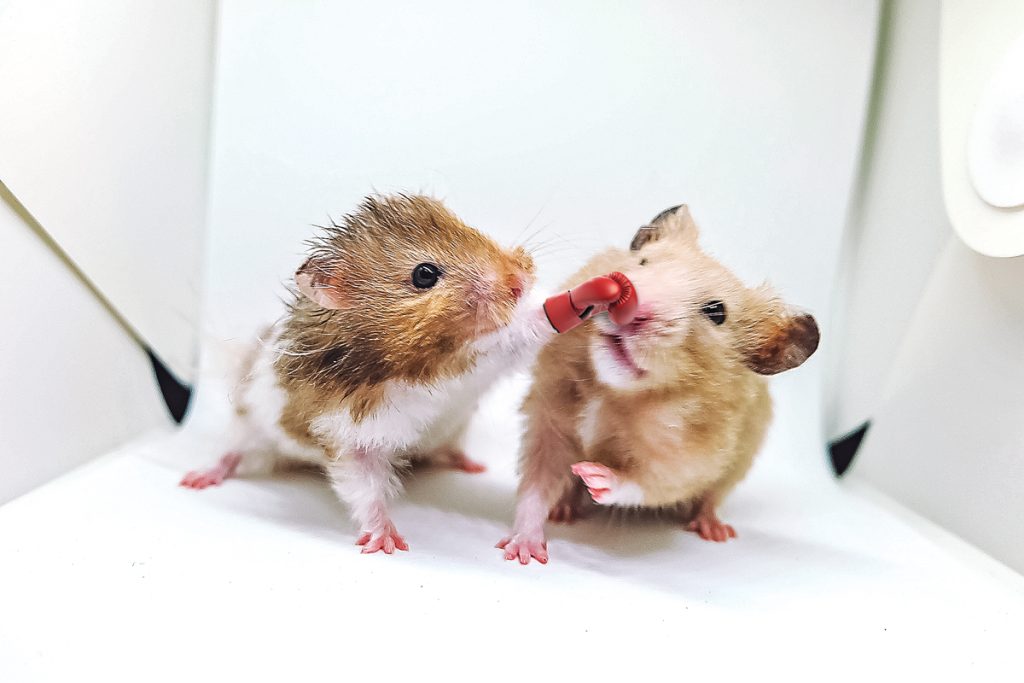Hamsters are one of the most popular pets in the world, loved for their cute and cuddly appearance. However, there are many myths and misconceptions surrounding these small animals that can lead to misunderstandings about their care and behavior. In this article, we will explore some of the most common hamster myths and misconceptions and provide accurate information to help you better understand and care for your furry friend.

Myth #1: Hamsters are solitary animals and do not need companionship.
While it is true that hamsters are solitary animals in the wild, they can still benefit from companionship in captivity. Syrian hamsters, in particular, are known to be territorial and may exhibit aggressive behavior towards other hamsters. However, dwarf hamsters can be kept in pairs or groups as long as they are introduced properly and housed in a spacious cage with plenty of hiding places and resources. Having a companion can provide mental stimulation and reduce stress in hamsters, leading to improved overall health and well-being.
Myth #2: Hamsters are low-maintenance pets that do not require much attention.
Hamsters may be small, but they do require regular care and attention. They need fresh food and water daily, as well as clean bedding and a clean cage. They also require exercise and mental stimulation, which can be provided through playtime, toys, and other activities. Neglecting their needs can lead to health problems and behavioral issues, such as aggression and anxiety.
Myth #3: Hamsters are nocturnal animals and do not need to be active during the day.
While hamsters are naturally nocturnal, they can be active during the day as well. In fact, they may adjust their activity patterns to match their owner’s schedule with proper training. Providing plenty of toys, exercise wheels, and other interactive items can encourage your hamster to be active and engaged throughout the day.

Myth #4: Hamsters do not need to see a veterinarian.
Hamsters may be small, but they can still get sick and require veterinary care. Regular check-ups can help prevent and detect health problems early on, leading to better outcomes and potentially saving your hamster’s life. Signs of illness in hamsters can include lethargy, loss of appetite, diarrhea, and respiratory problems, among others.
Myth #5: Hamsters only need to eat commercial hamster food.
While commercial hamster food is a convenient and balanced option, hamsters can benefit from a varied diet of fresh fruits, vegetables, and other healthy foods. Snacks like nuts, seeds, and healthy treats can also provide added nutrition and mental stimulation for your hamster. However, it is important to avoid foods that are toxic to hamsters, such as garlic, onion, and chocolate.
Myth #6: Hamsters do not need exercise.
Hamsters are active animals that require exercise to maintain their physical and mental health. Exercise wheels and other toys can provide physical activity and mental stimulation, preventing boredom and promoting good health. A lack of exercise can lead to obesity, muscle weakness, and other health problems.

Myth #7: Hamsters do not need a large cage.
Hamsters need plenty of space to move around, play, and exercise. A small cage can lead to stress, boredom, and even health problems. The minimum recommended size for a hamster cage is 24 inches long, 12 inches wide, and 12 inches high. However, bigger is always better. The more space your hamster has, the happier and healthier it will be.
There are many myths and misconceptions surrounding hamsters that can lead to misunderstandings about their care and behavior. By understanding the truth behind these myths, you can provide your hamster with the best possible care and ensure their health and well-being. Remember to provide plenty of attention, exercise, and mental stimulation, as well as regular veterinary care and a spacious living environment. By doing so, you can help your furry friend live a happy and healthy life as part of your family.